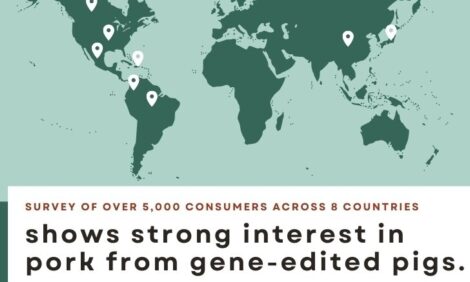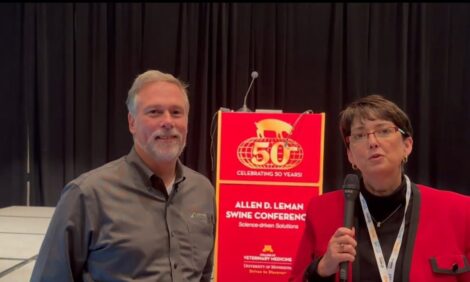



Biosecurity Pays Dividends
"An ounce of prevention is worth a pound of cure," explains Dave van Whellingham (Sheriden Hueser Provis, Steinbach, Manitoba). "That is the essence of biosecurity." He is writing for Prairie Swine Centre. Outlining the process of cleaning and disinfection in four steps, he also shows how to estimate the amount of cleaning agents required.Abstract
The project aimed to estimate the net energy (NE) content of canola meal (CM) and full-fat canola seeds (FFCS) in swine and to validate these values, through growth studies using diets containing graded levels of CM or FFCS. No difference in average daily gain and feed conversion ratio was observed between the treatments. This confirms that the estimation of the NE content (CM 2.41 and FFCS 3.53 Mcal/kg DM) was correct and that it is possible to formulate balanced diets for growing pigs that contain up to 15 per cent FFCS and 22.5 per cent CM.
Introduction
Canola meal (CM) is used in animal nutrition but has to compete with other protein sources such as soybean meal and peas. Currently, CM is not used to its full potential in swine nutrition due in part to a lack of confidence in its nutritional quality. It is perceived as a poor energy source due to its low starch and oil contents and high protein and fibre content.
Thanks to their high oil content, full-fat canola seeds (FFCS) could partly contribute to correct the low energy content of CM. However, the seeds must be crushed to liberate the drops of oil entrapped within the cell walls and little information is available on the efficiency of the process.
The NE system is the best estimative to predict pig growth and its ability to convert feed into lean meat. However, it is often estimated by means of prediction equations because the direct determination is time-consuming and expensive. It is possible to confirm the validity of the NE content of CM or FFCS by measuring the feed conversion ratio of pigs fed with canola-based-diets. If the growth rate does not correspond to the predicted value, it means that the current values of NE over- or underestimate the real energy potential of these canola products.
The present project aimed to estimate the NE content of CM and FFCS and validate them through a growth trial using different graded levels of both ingredients in growing pigs.
Material & Methods
A total of 18 growing pigs (36 kg on average) were used for the digestibility study. Three experimental diets were prepared: a control diet (composed of barley, soybean meal and a mineral/vitamin premix) and two diets composed of two-thirds of the control diet and one-third of CM or FFCS. Each diet was tested on six growing pigs. After an adaptation period to the diet of 10 days, the faeces were quantitatively collected for 10 days. The samples were then pooled per animal, freeze-dried and analysed at the University of Saskatchewan. The digestible and net energy (DE and NE) content of the diets were calculated. The same parameters were calculated for the CM or FFCS alone (Table 1).

Based on the results of NE content of both CM and FFCS, two separate growth studies were conducted with graded levels of CM or FFCS. In each study, 72 growing pigs were used and four diets containing graded levels of FFCS (0, 5, 10 and 15 per cent) or CM (0, 7.5, 15 and 22.5 per cent) were formulated in order to meet the pig’s nutritional requirements. Each diet was tested on 18 growing pigs (9 females and 9 males) for 35 days.
Results
The DE content was 3.51 and 4.99 Mcal/kg DM and the NE 2.41 and 3.53 Mcal/kg DM for CM and FFCS, respectively. The DM and nitrogen digestibility for CM was 74 and 79 per cent and for FFCS 75 and 74 per cent, respectively (Table 1). The results of growth performance are detailed in Table 2 and Figure 1. No difference in average daily gain (ADG) and feed conversion ratio (FCR) was observed when CM (ADG, 1.07 ± 0.29 kg/d and FCR, 1.99 ± 0.56) or FFCS (0.97 ± 0.24 kg/d and 2.27 ± 0.56) were included at different levels in the diets (P>0.05).


Conclusions
The validity of the values of NE obtained for CM (2.41 Mcal/kg DM) and FFCS (3.53 Mcal/kg DM) was confirmed through growth experiments. The latter also showed that inclusion rates up to 22 per cent canola meal and 15 per cent full-fat canola seeds in rations have no detrimental effect on the performances of growing pigs.
March 2009





